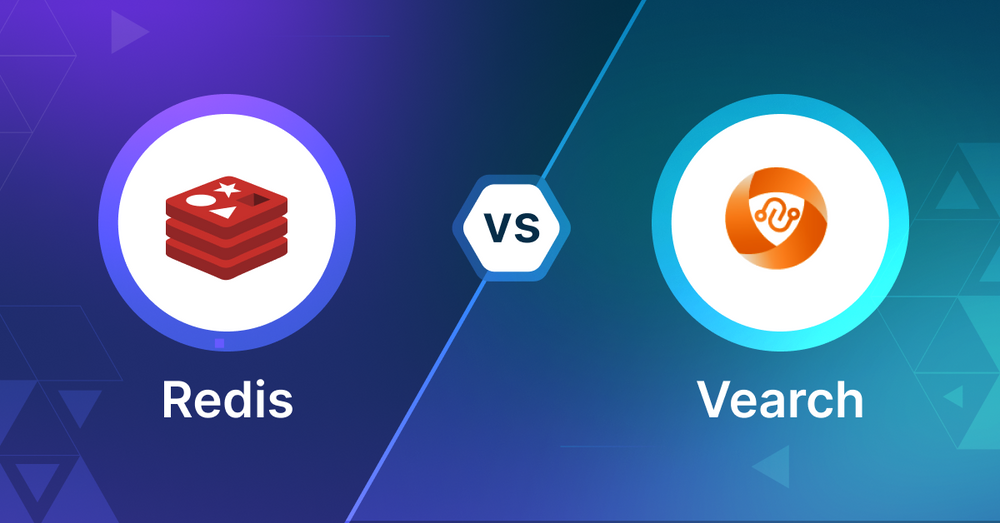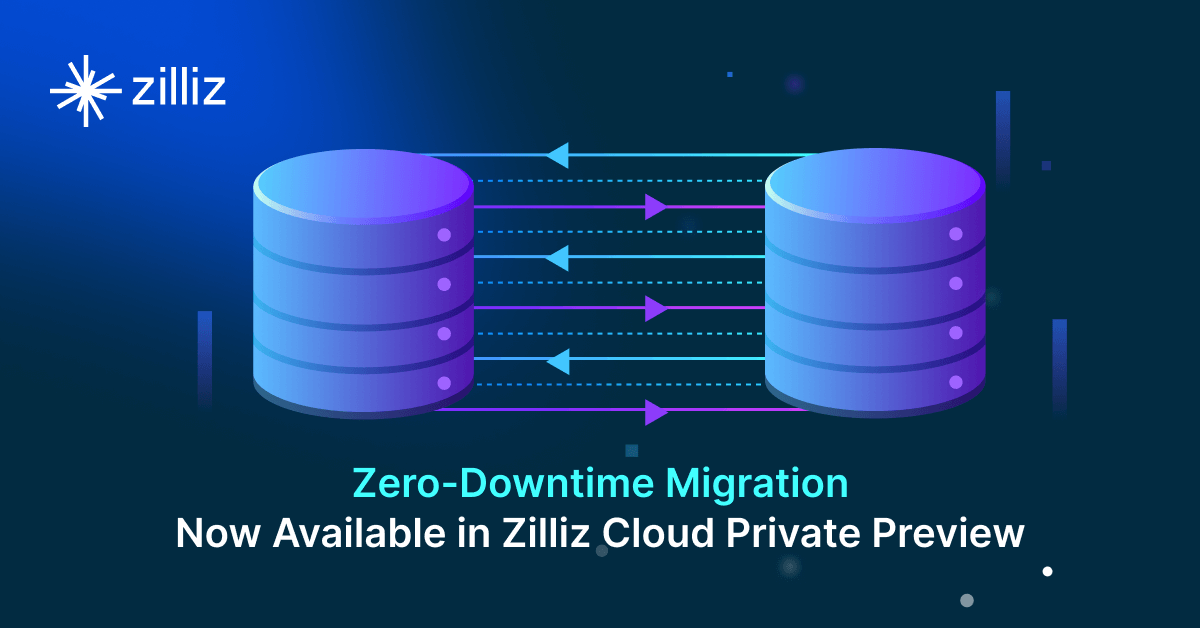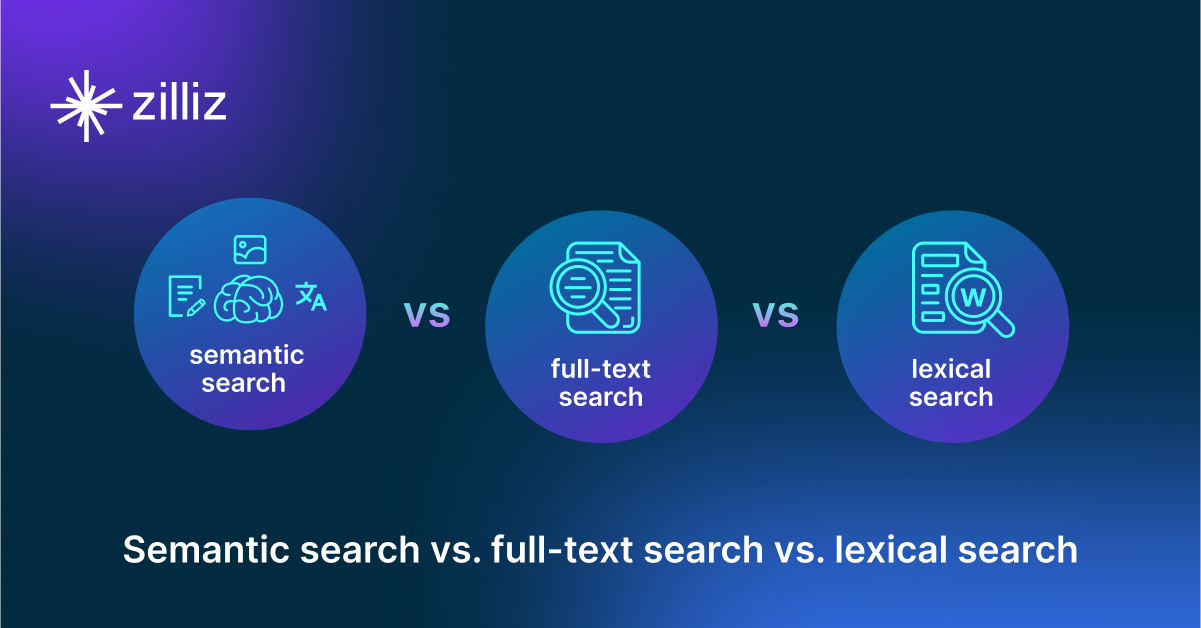Redis vs Vearch: Choosing the Right Vector Database for Your Needs

As AI and data-driven technologies advance, selecting an appropriate vector database for your application is becoming increasingly important. Redis and Vearch are two options in this space. This article compares these technologies to help you make an informed decision for your project.
What is a Vector Database?
Before we compare Redis and Vearch, let's first explore the concept of vector databases.
A vector database is specifically designed to store and query high-dimensional vectors, which are numerical representations of unstructured data. These vectors encode complex information, such as the semantic meaning of text, the visual features of images, or product attributes. By enabling efficient similarity searches, vector databases play a pivotal role in AI applications, allowing for more advanced data analysis and retrieval.
Common use cases for vector databases include e-commerce product recommendations, content discovery platforms, anomaly detection in cybersecurity, medical image analysis, and natural language processing (NLP) tasks. They also play a crucial role in Retrieval Augmented Generation (RAG), a technique that enhances the performance of large language models (LLMs) by providing external knowledge to reduce issues like AI hallucinations.
There are many types of vector databases available in the market, including:
- Purpose-built vector databases such as Milvus, Zilliz Cloud (fully managed Milvus), and Weaviate
- Vector search libraries such as Faiss and Annoy.
- Lightweight vector databases such as Chroma and Milvus Lite.
- Traditional databases with vector search add-ons capable of performing small-scale vector searches.
Redis is an in-memory database with vector search capabilities added on. Vearch is a purpose-built vector database. This post compares their vector search capabilities.
Redis: Overview and Core Technology
Redis was originally known for its in-memory data storage and has added vector search capabilities through the Redis Vector Library which is now part of Redis Stack. This allows Redis to do vector similarity search while keeping its speed and performance.
The vector search in Redis is built on top of its existing infrastructure, using in-memory processing for fast query execution. Redis uses FLAT and HNSW (Hierarchical Navigable Small World) algorithms for approximate nearest neighbor search which allows for fast and accurate search in high dimensional vector spaces.
One of the main strengths of Redis vector search is that it can combine vector similarity search with traditional filtering on other attributes. This hybrid search allows developers to create complex queries that consider both semantic similarity and specific metadata criteria, so it’s versatile for many AI driven applications.
The Redis Vector Library provides a simple interface for developers to work with vector data in Redis. It has features like flexible schema design, custom vector queries and extensions for LLM related tasks like semantic caching and session management. This makes it easier for AI/ML engineers and data scientists to integrate Redis into their AI workflow, especially for real-time data processing and retrieval.
Vearch: Overview and Core Technology
Vearch is a powerful tool designed for developers working with AI applications that need fast and efficient similarity searches. It's like a supercharged database, but instead of just storing regular data, it's built to handle those tricky vector embeddings that power a lot of modern AI tech.
One of the coolest things about Vearch is its hybrid search capability. You can search using vectors (think finding similar images or text) and also filter results based on regular data like numbers or text. This means you can do complex searches like "find products similar to this one, but only in the electronics category and under $500." It's fast too - we're talking about searching through millions of items in just milliseconds.
Vearch is built to grow with your needs. It uses a cluster setup, kind of like a team of computers working together. You've got different types of nodes (master, router, and partition server) that handle different jobs, from managing metadata to storing and computing data. This setup allows Vearch to scale out easily and stay reliable even as your data grows. You can add more machines to handle more data or traffic without breaking a sweat.
For developers, Vearch offers some neat features that make life easier. You can add data to your index in real-time, so your search results are always up-to-date. It supports multiple vector fields in a single document, which is handy for complex data. There's also a Python SDK for quick development and testing. Plus, Vearch is flexible with indexing methods (like IVFPQ and HNSW) and supports both CPU and GPU versions, so you can optimize for your specific hardware and use case. Whether you're building a recommendation system, a similar image search, or any AI app that needs fast similarity matching, Vearch gives you the tools to make it happen efficiently.
Key Differences
When choosing between Redis and Vearch for vector search consider:
Search Method:
Redis uses FLAT and HNSW (Hierarchical Navigable Small World) for approximate nearest neighbor search. Vearch supports multiple indexing methods (IVFPQ and HNSW) and has CPU and GPU versions for search.
Data:
Redis combines vector similarity search with filtering on other attributes, so you can do hybrid queries. Vearch also has hybrid search, can handle vector embeddings and regular data types in one system.
Scalability and Performance:
Redis uses in-memory processing for fast query execution, builds vector search on top of its existing infrastructure. Vearch uses a cluster setup with different node types (master, router, partition server) to distribute tasks and scale horizontally.
Flexibility and Customization:
Redis Vector Library has flexible schema design and custom vector queries. Vearch supports multiple vector fields in one document and various indexing methods to optimize for specific use cases.
Integration and Ecosystem:
Redis integrates well with AI workflows, has semantic caching and session management. Vearch has a Python SDK for quick development and testing, suitable for various AI applications.
Ease of Use:
Redis Vector Library tries to provide a simple interface for developers to work with vector data. Vearch has real-time indexing and supports complex queries combining vector similarity and metadata filtering.
Cost:
Redis is open-source with paid enterprise options. Vearch is also open-source.
Security:
Redis has various security features (encryption and access control) especially in enterprise versions. Vearch's doc doesn't mention security prominently, so you'll have to dig deeper to find out about specific security features.
When to Choose Each Technology
Redis is best for applications that need ultra fast real time vector search along with traditional data operations. It excels in scenarios where low latency is key, such as recommendation systems, real time fraud detection or content matching in live environments. Redis is perfect for projects that already use Redis for other purposes and want to add vector search without introducing a new database. The hybrid search is ideal for applications that need to combine semantic similarity with attribute filtering, like personalized e-commerce product recommendations or context aware chatbots.
Vearch is best for large scale AI applications that need complex similarity search across massive data. It’s perfect for image recognition systems, natural language processing tasks and recommendation engines that handle millions of items. Vearch’s distributed architecture is ideal for projects that expect rapid growth and need a system that can scale horizontally. It supports both CPU and GPU versions so you have flexibility in hardware optimization, good for organizations with varying computational resources or want to use GPU acceleration for vector search.
Conclusion
Redis is best for in-memory processing, seamless integration with existing Redis setup and hybrid search combining vector similarity and traditional data filtering. Vearch is best for scalability, distributed architecture for massive data and complex AI driven search with GPU support for performance optimization. Choose between Redis and Vearch based on your use case, data volume, performance requirements and existing infrastructure. Choose Redis if you need real time processing and already use Redis in your stack or if you have moderate sized data that need fast hybrid queries. Choose Vearch if you are building large scale AI applications, need robust scalability or want to optimize performance with GPU acceleration. Both have powerful vector search but their strengths fit different types of projects and organizations.
While this article provides an overview of Redis and Vearch, it's key to evaluate these databases based on your specific use case. One tool that can assist in this process is VectorDBBench, an open-source benchmarking tool designed for comparing vector database performance. Ultimately, thorough benchmarking with specific datasets and query patterns will be essential in making an informed decision between these two powerful, yet distinct, approaches to vector search in distributed database systems.
Using Open-source VectorDBBench to Evaluate and Compare Vector Databases on Your Own
VectorDBBench is an open-source benchmarking tool designed for users who require high-performance data storage and retrieval systems, particularly vector databases. This tool allows users to test and compare the performance of different vector database systems such as Milvus and Zilliz Cloud (the managed Milvus) using their own datasets and determine the most suitable one for their use cases. Using VectorDBBench, users can make informed decisions based on the actual vector database performance rather than relying on marketing claims or anecdotal evidence.
VectorDBBench is written in Python and licensed under the MIT open-source license, meaning anyone can freely use, modify, and distribute it. The tool is actively maintained by a community of developers committed to improving its features and performance.
Download VectorDBBench from its GitHub repository to reproduce our benchmark results or obtain performance results on your own datasets.
Take a quick look at the performance of mainstream vector databases on the VectorDBBench Leaderboard.
Read the following blogs to learn more about vector database evaluation.
Further Resources about VectorDB, GenAI, and ML
- What is a Vector Database?
- Redis: Overview and Core Technology
- Vearch: Overview and Core Technology
- Key Differences
- **When to Choose Each Technology**
- Conclusion
- Using Open-source VectorDBBench to Evaluate and Compare Vector Databases on Your Own
- Further Resources about VectorDB, GenAI, and ML
Content
Start Free, Scale Easily
Try the fully-managed vector database built for your GenAI applications.
Try Zilliz Cloud for FreeKeep Reading

Zero-Downtime Migration Now Available in Zilliz Cloud Private Preview
Zero-Downtime Migration enables seamless cluster-to-cluster migrations within Zilliz Cloud while maintaining full service availability.

Introducing DeepSearcher: A Local Open Source Deep Research
In contrast to OpenAI’s Deep Research, this example ran locally, using only open-source models and tools like Milvus and LangChain.

Semantic Search vs. Lexical Search vs. Full-text Search
Lexical search offers exact term matching; full-text search allows for fuzzy matching; semantic search understands context and intent.
The Definitive Guide to Choosing a Vector Database
Overwhelmed by all the options? Learn key features to look for & how to evaluate with your own data. Choose with confidence.